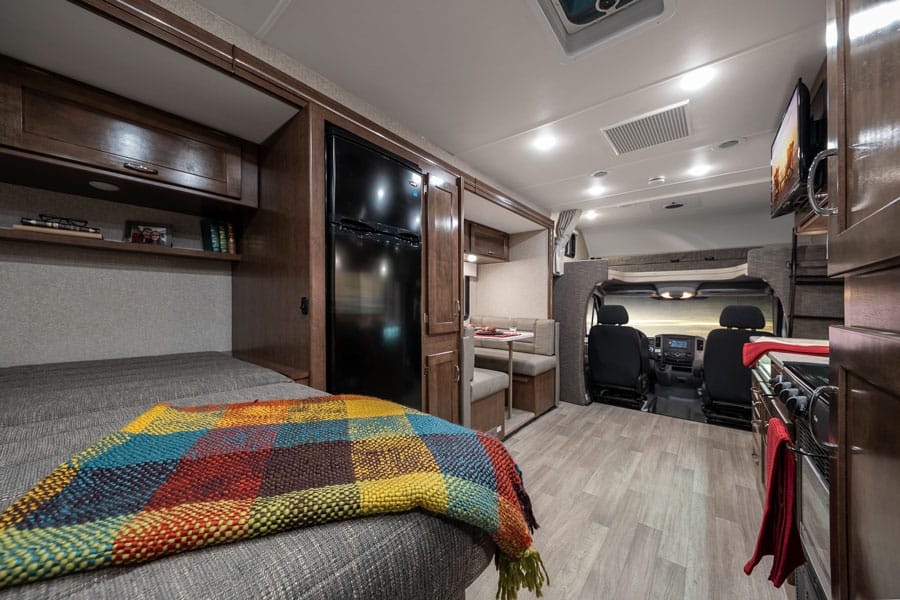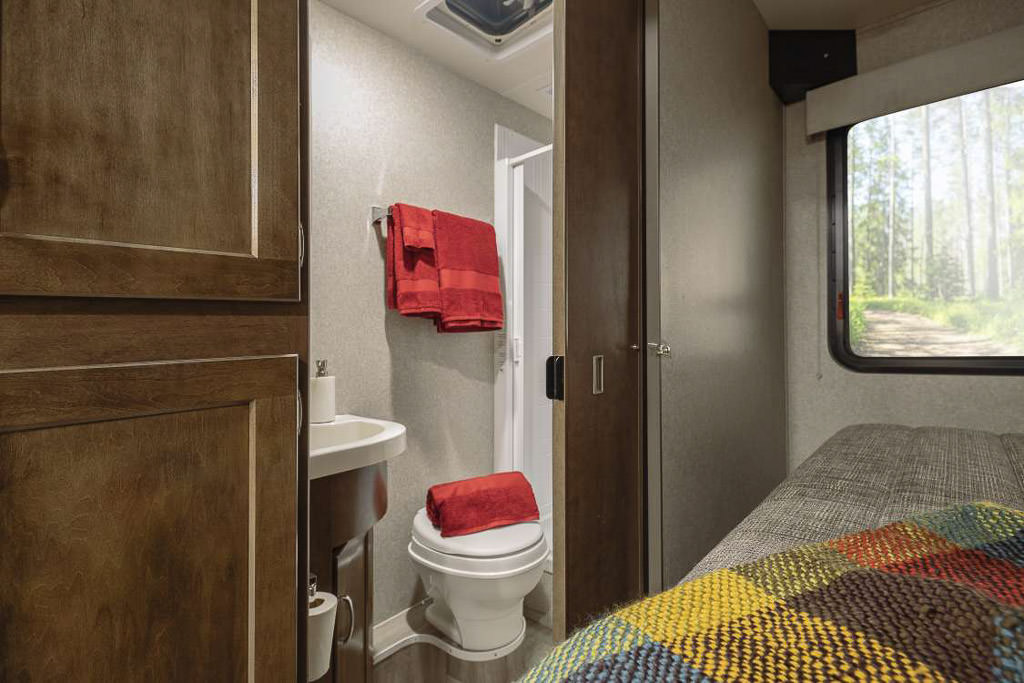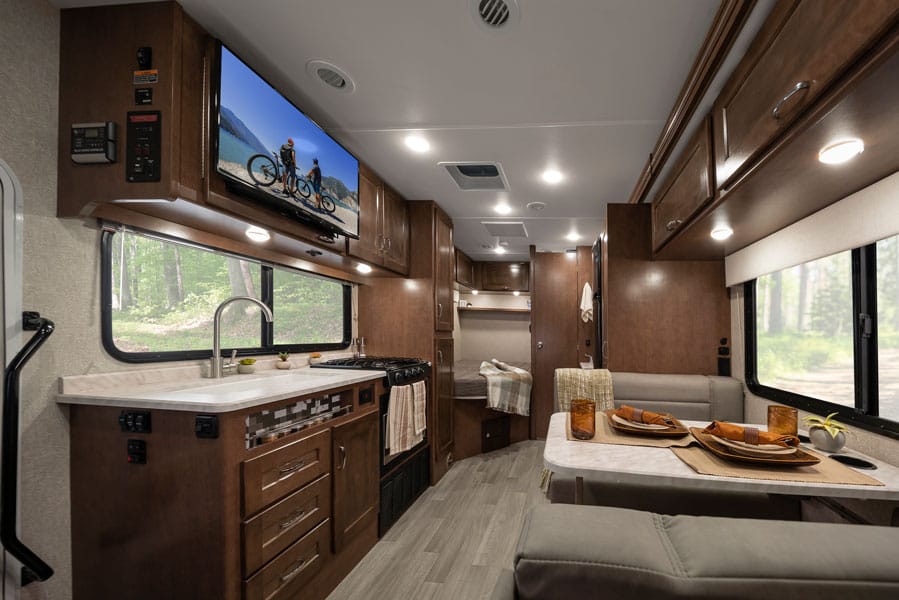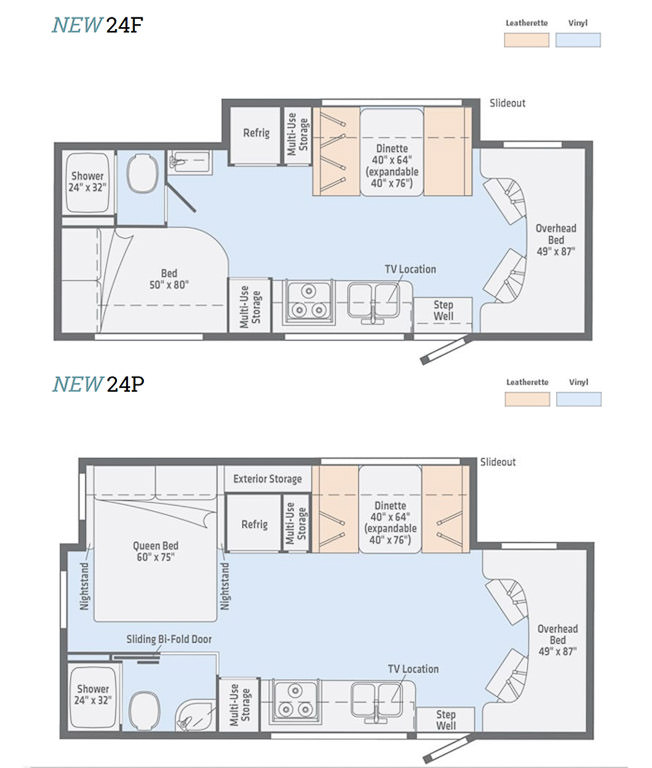
Winnebago Product Q&A: Class C Vita/Porto
Winnebago's brand-new Vita and Porto Class C motorhomes are some of the newest additions to the company's offerings. If you are considering this as an option for you and your family, we know you'll have a lot of questions. Luckily, we have some of the answers you are looking for right here -- straight from the team who knows this product best.
Russ Garfin, Winnebago's Product Manager for Class B & Compact Class C motorhomes, presented this new best-in-class option during our virtual launch event at the annual RV Open House last September. During the live event, he shared a ton of information about this innovative motorhome and tried to answer all viewer questions. But, in case you missed the answer you were looking for during the event, we've compiled a list of the top questions about this new Class C.

Vita/Porto Overview
- Length: At 24'7'', this is shorter than most Class C motorhomes, making it even more nimble and easy to drive than its predecessors. (For reference, the 2020 View/Navion is 25'5'').
- Engine: The Vita is built on the Mercedes-Benz V6 diesel engine Sprinter chassis.
- Exterior Width: 7'6''
- Exterior Height: 11'6" (to the top of the A/C).
- Interior Height: 7'0''
- Tank Capacity: 37 gallons for freshwater and the gray and black tanks both hold 41 gallons.
- Water Heater Capacity: 6 gallons
- Dry Weight: 11,030 lbs. With tanks at capacity, the weight is 9,220 lbs., leaving up to 1,810 lbs. (in the 24F) before you will go over. However, this number can vary with floorplan and options included.
- Price: For the 24F, prices start at $119,670 and for the 24P, prices start at $121,368.
Vita/Porto Q&A
What type of RVer did Winnebago have in mind when creating the Vita/Porto?
Winnebago is constantly interviewing owners and keeping a pulse on how the RV market is changing. The Vita/Porto is the answer to RVers wanting a motorhome option that is easy for first-time RVers to drive and use, can handle being on the road often, and is capable of boondocking, moochdocking, and other dry camping for extended periods. They've also made multiple upgrades to make this RV less likely to need service work. Since many first-time RVers are also looking at lower-priced RVs, Winnebago wanted to create this option to fit their needs without going over budget.
What is the difference between the Vita and Porto?
The Porto is the sister product to the Vita, similar to the Navion and View. The same floorplans and features are included in each.

What are some of the new innovations that have been added to the Vita/Porto?
Reduced chance for service: One of Winnebago's goals with this RV is to help owners stay out of the service centers. So, the water system has fewer connections -- which means fewer chances for leaks and easier winterization. Plus, the LP system features an all-new manifold design that reduces the number of fittings and potential for leaks.
The SuperShell™ Sleeper Deck: The above-cab sleeping area has been changed to a new better-insulated, fiberglass cab. Because of its seamless design, it has added thermal and acoustic insulation which will provide a warmer, more comfortable sleep on the 49" x 87" mattress in the cab. This design will also help prevent condensation and will squeak less when you are driving.
Customizable/multiuse storage areas: The pantry features removable rods and shelves to customize the space to your needs. So, you could use it as a food pantry or a closet of clothes, etc. The linen cabinet of the 24F also provides additional and easily accessible storage for towels or other supplies.
Unique 24P bathroom door design: In this floorplan, the bathroom door has an innovative design that gives you more space inside the bath and keeps easy access to bed and bath.

Is this a good option for RVers who want to boondock/dry camp?
Yes! This motorhome was made especially with boondockers in mind. It comes standard with 200-watts of solar on the roof and is pre-wired to be able to expand to 475-watts. It also has a 1000-watt pure sine inverter and dual deep-cycle, Group 31 batteries. These new batteries are the largest Winnebago has ever put in a Sprinter Class C and offer 210-amp hours of power.
The residential-style, compressor fridge runs off the invertor, but uses very little power. So, you can go several days off-grid. It will also work at higher altitudes and will not break if not level (for those driveway campouts at your friend's house).
The high capacity of the holding tanks will also be a perk for people who like to go off-grid. The fresh water can hold 37 gallons and the gray and black tanks can each hold 41 gallons. Plus, you can even get to the restroom with the slide in on both floorplans -- for those quick road trip stops!
Is there enough storage space available for those wanting to full-time RV?
The Vita/Porto has best-in-class storage with full-timers in mind. The 24F floorplan features 42-cubic-feet of lighted, exterior storage and the 24P features 45. In the 24P floorplan, Winnebago made the slide L-shaped to capitalize on even more storage space. And in the 24F, there is a small linen closet in the bathroom for bonus storage.
Additionally, there is a residential-style refrigerator, a lighted under-sink spice rack in the kitchen, and some space behind one of the dinette cushions that can either be used for extra storage or more leg room when sleeping.

What about people working from their RV?
Since technology varies and people may want different cell and internet plans, Winnebago decided to add a conduit with roof port wiring access to make adding Wi-Fi antennas and/or cell boosters easier.
They made sure to upgrade the dinette cushions to a more comfortable, high-density foam as well. This will make working from that area -- or using it for a mid-day nap -- much nicer. There is also strategic placement of 110V, 12V, and USB outlets to make sure you can keep your devices charged no matter where you are in the RV.
How are the two floorplans different?
Both the 24F and 24P floorplans have at least 40-cubic-feet of exterior storage and can sleep someone up to 6'4'' (even at the dinette, thanks to the hidden bonus leg room space)! Winnebago has also consciously made especially large galleys, and even the bathroom door of the 24P gives extra space in the bathroom once closed.
One of the main differences between the two floorplans is where the slide is located. In the 24F, the dinette is in the slide and in the 24P, the bed is in the slide. To pull in the slide in the 24P, you would fold the hinged mattress beforehand - making the bathroom still accessible without putting the slide out.

We hope this has answered some of your questions about this new product! For a complete walkthrough of this RV, watch this video from our September Facebook Live event.
If you are interested in this motorhome, learn more about the Vita/Porto Class C motorhome here and be sure to visit a dealer near you to see this RV in person!
Comments
Comments on this post are moderated, so they will not appear instantly. All relevant questions and helpful notes are welcome! If you have a service inquiry or question related to your RV, please reach out to the customer care team directly using the phone numbers or contact form on this page .